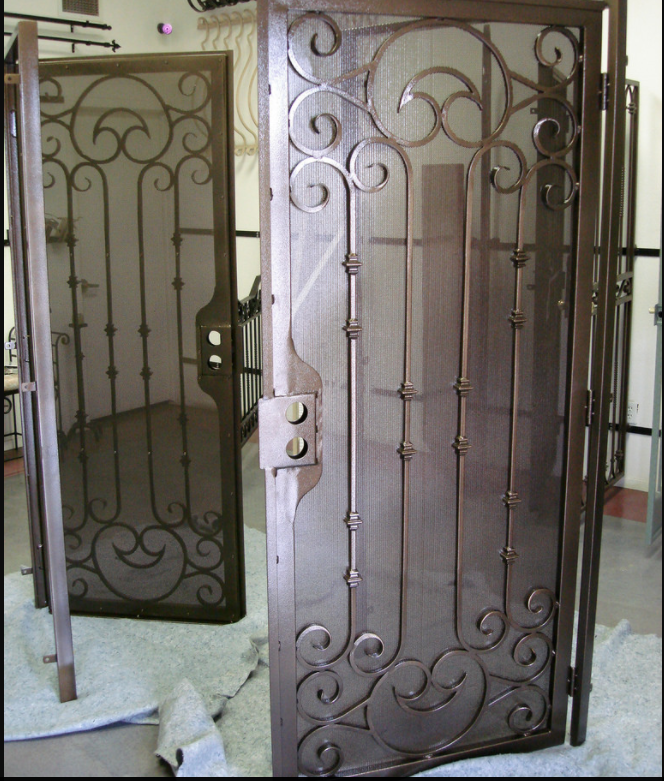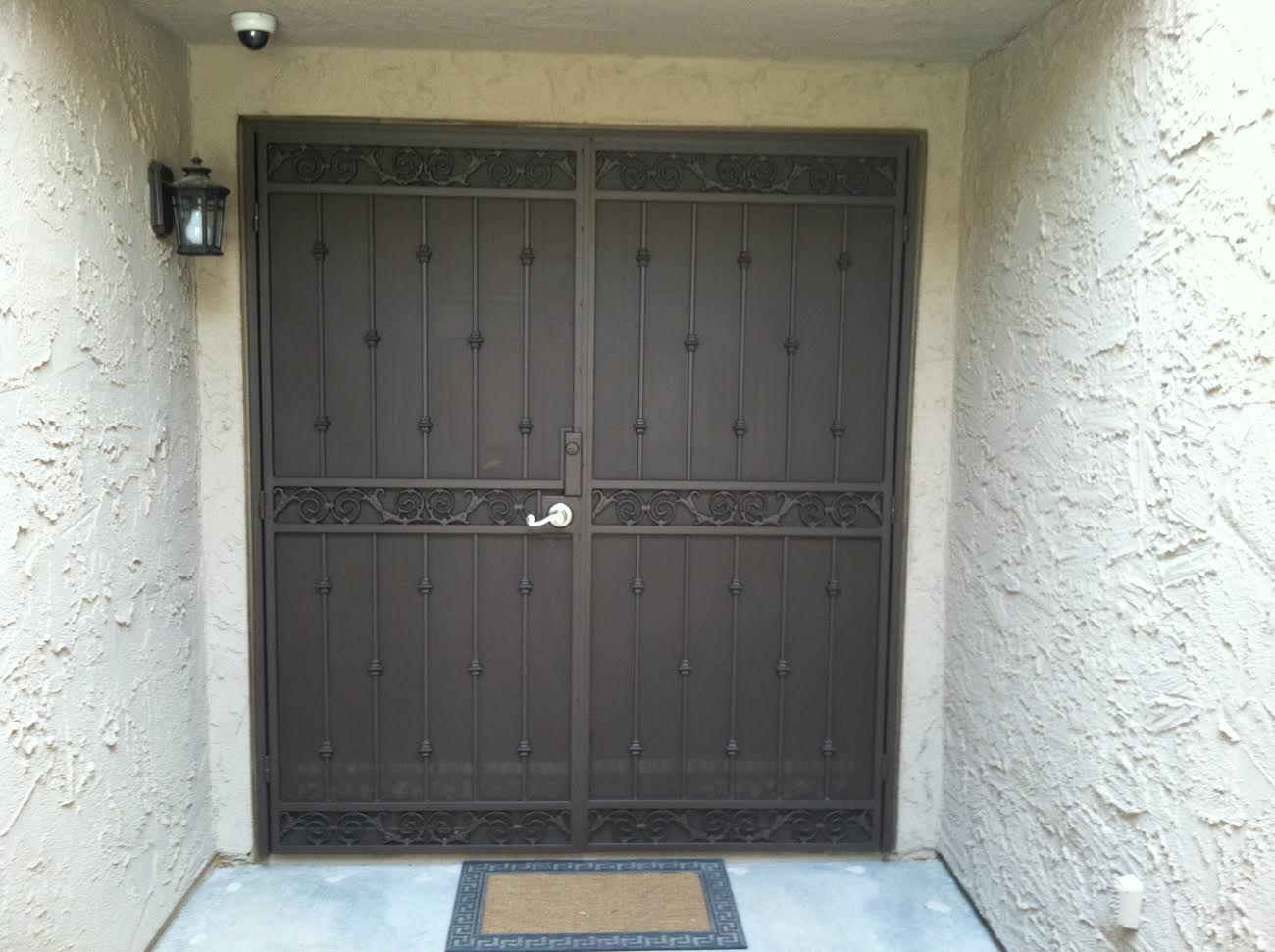
Iron Working Building Codes and Fire Safety: 6 Things Everyone Should Know
If you’re considering buying new doors for your home or business, you probably noticed how popular wrought iron doors and gates are in today’s marketplace. Consumers know iron doors are sturdy and tough. They also know iron doors not only protect against intruders, but they improve the look of your home. They stand up better in harsh weather, and are more impervious to corrosion, than wood or fiberglass. If you are serious about the safety aspects of the door you choose, then you’ll want to make sure you know these six things about Iron Working Building Codes and Fire Safety,
The US Has Two Key Building Codes
In the US, building contractors and fabricators are bound by two key building codes. They are:
- The International Building Code (IBC) published by the International Code Council, and
- The NFPA Building Construction and Safety Code from the National Fire Protection Association (NFPA). The newest edition of the NFPA code was completed by 2021.
There is a significant difference between a fire code and a building code. Building codes incorporate the minimum fire safety and fire prevention practices into the initial construction phase and installation of the systems into the new building.
A fire code, on the other hand, decrees the minimum fire prevention protocols on a continuing basis, not just in the initial construction phase. Fire codes address the necessary equipment and training as well as inspection and maintenance protocols.
Local and State jurisdictions adopt both building codes and fire codes into their laws to enable legal action to enforce the rules.
When Did Building Codes Start in the US?
After the great Chicago fire in 1871, building codes started to speak to issues of safety with respect to nearby buildings and the public. By 1905, the National Board of Fire Underwriters created the National Building Code. By 1940, the US had three building code entities and each of them had their own codes.
The three organizations were merged into one as the International Code Council (ICC) and in 2000 the first set of ICC codes were published. They were the International Building Code (IBC), The International Residential Code (IRC), and the International Energy Conservation Code (IECC), as well as other codes for disciplines like plumbing and mechanical trades.
The US has local and state codes, too. Some local jurisdictions adopt the ICC rules, but others still enforce the older rules, have their own rules, or do not have any rules at all. That is why, when you are building or revising your home or business building, it is vital to know what the laws in your jurisdiction require when it comes to fire safety in buildings and with respect to personal safety.
When Did the National Fire Protection Association Start?
The National Fire Protection Association (NFPA) started in 1896 with a goal to eliminate death, personal injury and property damage from fire and other associated hazards with respect to buildings.
NFPA is probably best known globally for its codes and standards for buildings, design, and installations. NFPA has an educational component and a public outreach/advocacy component as well as training seminars and conferences.
Fire Code Requirements for External Doors and Gates
People are afraid of crime in their neighborhoods. To prevent break-ins, people put security bars on their windows, and gates or iron doors on the exits and entrances to their homes. The NFPA Life Safety Code 101 states that all building exits must be easily opened from the inside. A person should not need to use keys, codes, or special tools to exit the building. The NFPA Life Safety Code covers life safety in new and existing buildings. In addition, many states and local jurisdictions require secured exits to have a quick release device to prevent loss of life in the event of a fire.
Means of egress violations are the most commonly cited for noncompliance.
Building Code Requirements for Locks on External Doors and Gates
The building industry has struggled over the years to determine the balance between personal fire safety and building security. The International Building Code draws a bright line to designate where building security ends and personal fire security must take precedence.
For security reasons, property owners may use locks with keys to prevent entry into a building from someone on the outside. The locks on the inside of the exit door, however, must not require a key or a security code to open the door.
These rules apply to homeowners but also to workplaces. For example, the Occupational Safety and Health Administration (OSHA) requirements are set by statute, standards, and regulations. One OSHA standard, 1910.36(d), states that exit doors must not be locked during regular business hours. Employees must be able to open an exit door without needing keys, tools, or special knowledge (like key codes). Special rules apply to areas that must remain locked for patient safety.
At a minimum, a person trying to exit a door or a gate in the normal course of business must be able to turn a thumb knob to open the lock and exit the building. Crash bars are another alternative.
For an example closer to home, in Nevada, the International Residential Code’s (IRC) Section R310.1.4 follows the fire safety rule that emergency escape and fire rescue openings must operate without the use of keys, tools, or special knowledge.
Relevance to Selecting a Contractor
The fire safety rules are intended to save lives and keep people safe. It’s important when selecting a contractor that you select someone who is experienced and knowledgeable about the various fire safety rules. That is true for fabricators of iron doors as much as any building contractors.
Contact us for a free price quote on iron doors that protect your home or workplace while they qualify with all code requirements. We take pride in the fact that we design our doors with your family’s and workers’ safety in mind.
A horrific fire that took place 120 years ago in New York City launched serious national attention to fire safety (including blocked and locked exit doors). You may appreciate the commemorative article from Smithsonianmag.com entitled “The Triangle Shirtwaist Factory Fire”.



